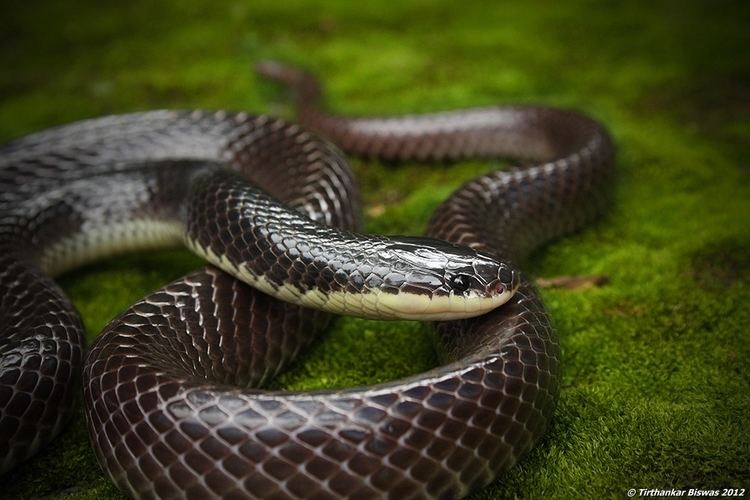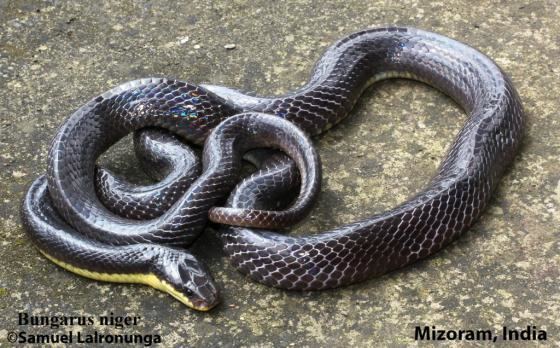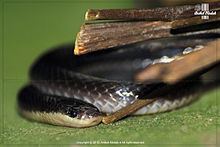Subphylum Vertebrata | Higher classification Indian kraits | |
 | ||
Similar Indian kraits, Snake, Lesser black krait, Sind krait, South Andaman krait | ||
Greater black krait snake highly venomous
The greater black krait (Bungarus niger) is a species of krait, a venomous elapid snake.
Contents
- Greater black krait snake highly venomous
- Description
- Distribution and habitat
- Behavior and ecology
- Venom
- References
Description

This species is medium in length, slender-bodied, and triangular in cross-section, with a short, pointed tail. It can grow to a maximum of about 1.3 m (4.3 ft), but adults usually average around 0.8 m (2.6 ft). The head is flat and slightly distinct from the neck. The eyes are small to medium in size, black with round pupils. dorsal scales are smooth and glossy with scales of the vertebral row enlarged and hexagonal. Dorsal scale count is 15 - 15 - 15. It is syntopic with the lesser black krait (Bungarus lividus), but can be separated by the enlarged dorsal vertebral scales. The number of ventral and subcaudals are higher than in all other Bungarus species (216-231 ventrals and 47-57 subcaudals).
Distribution and habitat

It is found in India mainly along the sub-Himalayas from Uttarakhand in the west to Arunachal Pradesh as well as in Nepal, Bhutan, Pakistan and Bangladesh. The species was described by Frank Wall from a specimen obtained from near Tindharia near Darjeeling. and the species is also available at Jalpaiguri town and other parts of the district. This species inhabits a wide variety of habitats from mangrove swamps to inhabited villages to montane forests up to elevations of 1,500 m (4,900 ft) above sea level on the Himalayan foothills.
Behavior and ecology

This nocturnal and terrestrial snake has an inoffensive disposition. When disturbed, it coils loosely and hides its head beneath its body; it is reluctant to bite except upon persistent provocation. It preys mostly on snakes and small mammals and occasionally lizards, frogs, and fish.
Venom

The venom of this snake contains a combination of pre- and postsynaptic neurotoxins and may also include myotoxins. Although often overlooked, this species is medically significant due to its history of numerous bites. The exact mortality rate from these bites is unknown but is reported to be relatively high, underlining the snake's potential danger to humans.
